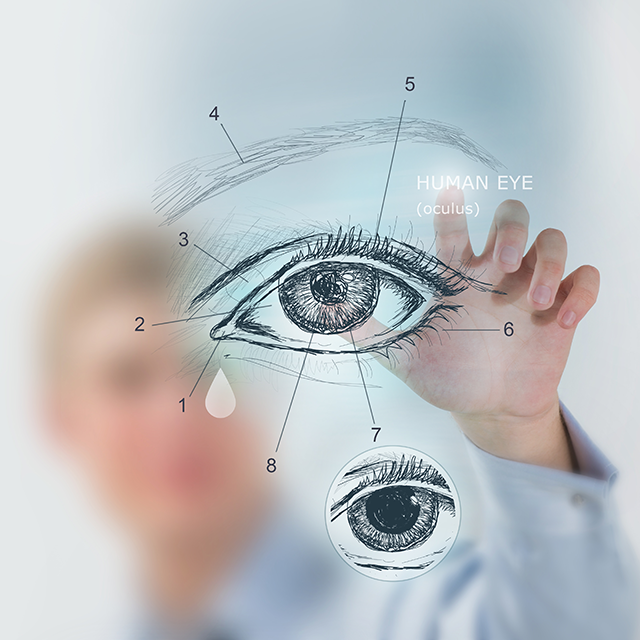Patient Education
How Your Eyes Work

How Your Eyes Work

 Sclera
Sclera Iris
Iris Cornea
Cornea Pupil
Pupil Lens
Lens Retina
Retina Optic Nerve
Optic Nerve
The sclera is commonly known as "the white of the eye." It is the tough, opaque tissue that serves as the eye's protective outer coat. Six muscles connect to it around the eye and control the eye's movements.
The iris makes up the coloured part of the eye. It controls the level of light entering the eyes, much like the aperture on a camera. The round opening in the center of the iris is called the pupil ![]() . The iris is embedded with tiny muscles that dilate (widen) and constrict (narrow) the pupil size.
. The iris is embedded with tiny muscles that dilate (widen) and constrict (narrow) the pupil size.
The cornea is the transparent, dome-shaped window covering the front of the eye. It is a powerful refracting surface, providing 2/3 of the eye's focusing power. It is because there are no blood vessels in the cornea that the cornea remains clear. However, the cornea does contain nerves. In fact, the cornea has the most nerve endings than anywhere else in the body, making this structure very sensitive.
The pupil is the opening in the center of the iris. The size of the pupil determines the amount of light that enters the eye. The pupil size is controlled by the dilator and sphincter muscles of the iris ![]() . Doctors often evaluate the reaction of pupils to light to determine a person's neurological function.
. Doctors often evaluate the reaction of pupils to light to determine a person's neurological function.
The crystalline lens is located just behind the iris. Its purpose is to focus light onto the retina. This structure accounts for the remaining 1/3 of the eye's focusing power. The lens is encased in a capsular-like bag and suspended within the eye by tiny "wires" called zonules. The lens changes shape to adjust for close or distance vision. This is called accommodation or focusing. With age, the lens gradually hardens, diminishing the ability to accommodate.
The retina is a multi-layered sensory tissue that lines the back of the eye. It contains millions of photoreceptors (rods & cones) that capture light rays and convert them into electrical impulses. These impulses travel along the optic nerve ![]() to the brain where they are turned into images.
to the brain where they are turned into images.
The optic nerve transmits electrical impulses from the retina to the brain. The retina's sensory receptor cells of retina are absent from the optic nerve. Because of this, everyone has a normal blind spot. This is not normally noticeable because the vision of both eyes overlaps. When the doctor examines the back of the eye, a portion of the optic nerve called the optic disc can be seen